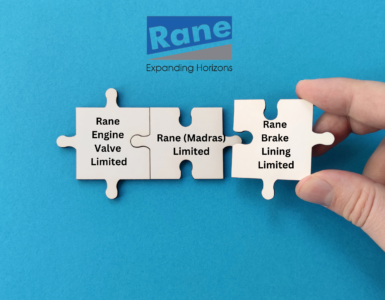Mergers are supposed to make companies more productive. They’re meant to get rid of inefficiencies, grow revenues and result in a stronger bottom line. But sometimes things don’t go according to plan. The new team won’t buy in, middle managers are unhappy with their pay, and the acquired company isn’t reaching its projected growth. What happened?
In numerous studies, researchers have found that somewhere between 50-80% of Mergers Fail To Create Value for shareholders. While some people believe the major issue is dealmakers who get caught up in trying to close deals at any cost, we believe that failure is more often the result of bungled attempts to merge the companies after the papers are signed.
AxialMarket Member until they were recently acquired by Badger Meter, spoke with us about his successful acquisitions and how he avoided three major issues common in most acquisitions.
1) Conflicting HR Policies and Pay Structures:
A huge issue in most mergers is finding a way to combine differing policies and pay between the two companies. Each has their own hiring policies, reporting, hierarchies, and employee benefits. As Tom told us, “There will always be structural differences between two merging firms. The real challenge is in the perks that some smaller companies offer to mid or senior level people that you’d prefer not match. You talk with them and try to make them whole. “
He continued, saying “Typically, communication is what makes it work. The best approach is to just get them all on one page and communicate the best you can. Compensation patterns and compensation structures are some of the things to deal with early in the process. Once the deal is done you want everyone to feel like they’re being treated fairly so that they jump into their job with both feet. If there is uncertainty after the close it can cause real issues in integration.”
As for dealing with policy issues, especially deeper human resources issues like job reviews, Tom noted that “A lot of the policies have to do with supervision. If you can keep as much of the existing supervision as possible you’re better off. Look at HR patterns when you’re looking at the deal. During due diligence or near closing, the skeletons start to come out of the closet. You’ll get a sense for the good managers and the ones you need a more hands-on approach with. Then you have a meeting with those managers. You’re also sensitive to the fact that if they’re not getting on the bus you need to address that issue.”
“One rule of thumb for policy issues is that if you, as an acquiring company, can’t get your own people do something very well don’t expect the acquired company to do it well.”
2) Differing Processes and Internal Procedures:
Once you have basic compensation issues worked out, the next issue to consider is how the companies run different systems internally. As Tom described, “Most of Racine’s acquisitions were smaller private acquisitions. Pre-closing the best thing to do was to get everyone together and on the same page. In smaller companies many times the CEOs or owners don’t do a lot of formal bookkeeping so there is a lot of legwork to get all the numbers and information. But those are just details, the trick is figuring out what you need to get your hands around. In a manufacturing company like Racine, the real work came in understanding production planning, financial planning, cash flow planning, etc. We really had to get those processes into place so we could do our work going forward.”
For the employees themselves, it can be quite a transition, especially as the acquiring firm starts to impose new production methods. Companies are often built around informal networks of relationships and knowledge, but as the methods change the old knowledge network loses value. In order to stay productive, employees often need to develop new relationships with different colleagues, a process that can be difficult if it’s not managed well. A recent study of mergers found that early appointments of new managers created significantly better long-term success in post-merger integrations, so “they can take an active part in decision-making and trust-building” which helps employees better navigate the changing processes.
3) Getting Employees to Identify with the New Company:
When senior managers get completely focused on getting a deal done, they can overlook the importance of company identity and culture. In many cases, employees of the target company connect deeply with the culture and brand of that company while having no feelings or even negative feelings towards the acquiring company. This is especially acute if the acquiring company is a prior competitor. The tension may result in lower productivity or territorial behavior.
Tom described the way Racine resolved the issue of getting buy-in, saying “The best thing Racine did over the years is what we referred to as ‘underbranding’. In this process, the target company’s name is kept in a premier position for a while (i.e. XYZ, a division of Racine Federated). This situation allows employees under the new management to retain a sense of identity from the past company. Then over time, maybe after a year or so, the two brands are more thoroughly merged. By then the employees feel comfortable being part of the larger organization.
“At Racine, we didn’t see much employee turnover. I think because of the understanding, which usually lasted a year or so, most of the people are onboard by the time we fully integrated the companies. The people who leave right away are the ones who don’t want to change to the new hiring policies, HR reviews, new culture, etc.”
The M&A climate has been tough in 2012. Not only are fewer mergers occurring, but 50-80% of the completed deals are failing. Whether it’s a clash of cultures, failed synergies, or something in the water, it seems like only a matter of time before you find yourself in the midst of a failed integration.
To help us understand how to avoid failed integrations, we spoke with Danny A. Davis, one of the most respected integration specialists in the UK. Davis is the founder of DD Consulting and recent author of M&A Integration – How to do it from Wiley.
Davis explained to us that one of the most important steps in preparing a successful integration is the act of comprehensive planning. The ill-planned strategy is more likely to derail a merger than any culture clash or issues with synergies. He explained, “The reason people come down to culture and communications is because they are used as excuses when things go wrong. Rather than admitting they’ve done something wrong or that they had a bad strategy, people talk about culture. It is more important to think and plan the integration strategy for the companies, the products, and the people.”
During our conversation, Davis walked us through some of his most important planning techniques. When preparing for a merger, Davis finds it important to consider everything, to begin the process with a standard working procedure, and to plan for the plannable. A few highlights from our conversation are below:
Early Planning Helps You Find the Right Deal at the Right Price:
“I like to start planning as early as possible. Ideally, you would start planning as soon as you decide to buy something. Although you don’t want to spend too much time and money planning (since you are unsure if the deal will close), it is extremely important to do some planning. If you have no plan for the target company, you are going to pay the wrong price and you are not going to be ready to handle the integration. I would do a couple of days planning right at the start. At latest, I would start building a full integration plan around 100 days before you believe the deal will take place.”
Consider Everything when Sourcing Deals and Picking a Target:
“When determining merger criteria, you need to consider absolutely everything. If you were to start with a blank sheet of paper and invent a 5,000 person company, you would need to consider every process and every situation to determine the best strategy. Although you may not ever start with a blank piece of paper, you still need to consider everything. By considering all the necessary elements, you can build the most effective strategy.”
Build a Standard List of Items to Review when Planning an Integration:
“For each merger, I have a list of about 6,000 items to consider. With every new deal, I add a few items. Although deals are always different and require different plans for different items, we can take a somewhat standard approach to increase efficiency. Many companies start from scratch each time, which costs money.”
“As deals get larger, they become more complex and the list changes. For example, with a $5 billion deal, I will likely make plans for each of the 6,000 items on my prepared list. However, if I’ve got a small deal – $5M – $10M – I can quickly narrow the list down to a few hundred items. The rest of the items are irrelevant or not appropriate for that deal.”
Accept the Unknowns:
“As you plan, there will be a whole slew of information that you can’t plan for because your due diligence only throws up a certain amount of information. Although you may have a full plan, there will always be information to find out. It is better to wait until you’ve bought the company to discuss these issues. After the first few days or weeks, you will be much better equipped to answer these questions and issues. In some cases, the target company may have already thought about the issues and you can adopt their strategies.”
Early Planning Makes You an Effective Decision Maker and Executor:
“If you have a strong plan established, you can communicate effectively right off the bat. Many problems in deals originate from indecisiveness. Good planning and early planning leads to quick decision making, quick delivery, and good communications.”
The strong foundation of effective decision making and good communications prepares you to handle the typical challenges of post-merger integrations. We plan to continue this conversation with Davis and publish an article next week discussing the typical challenges found in a post-merger scenario – especially around planning for integrating divisions, dealing with internal politics, and what you should focus on first.




